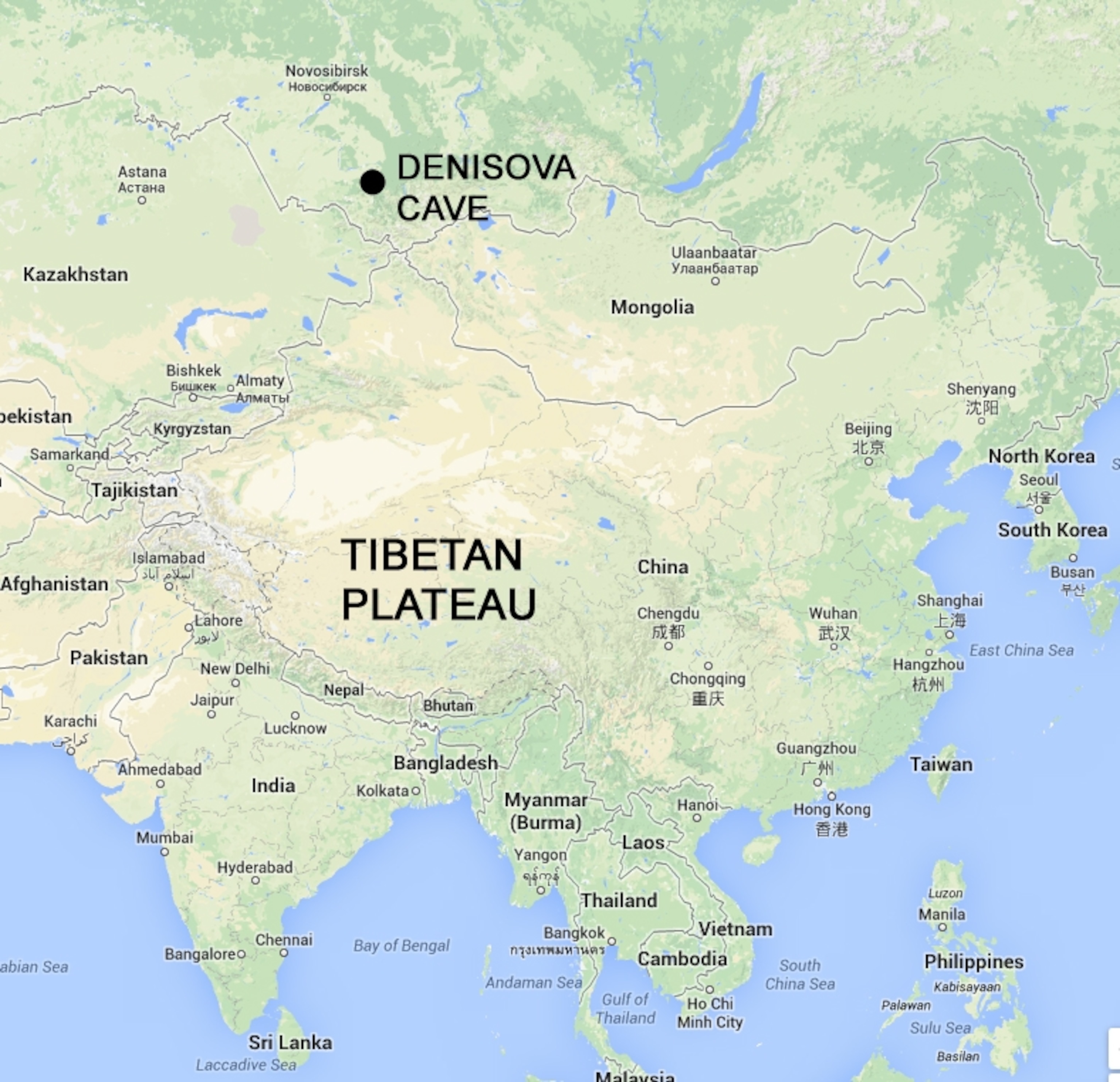
Extinct Humans Passed High-Altitude Gene to Tibetans
Tibetan people can survive on the roof of the world—one of the most inhospitable places that anybody calls home—thanks to a version of a gene that they inherited from a group of extinct humans called Denisovans, who were only discovered four years ago thanks to 41,000-year-old DNA recovered from a couple of bones that would fit in your palm. If any sentence can encapsulate why the study of human evolution has never been more exciting, it’s that one.
In 2010, Rasmus Nielsen from the University of California, Berkeley found that Tibetan people have a mutation in a gene called EPAS1, which helps them handle low levels of oxygen. Thanks to this mutation, they can cope with air that has 40 percent less oxygen than what most of us inhale, and they can live on a 4,000-metre-high plateau where most of us would fare poorly. To date, this is still “strongest instance of natural selection documented in a human population”—the EPAS1 mutation is found in 87 percent of Tibetans and just 9 percent of Han Chinese, even though the two groups have been separated for less than 3,000 years.
But when the team sequenced EPAS1 in 40 more Tibetans and 40 Han Chinese, they noticed that the Tibetan version is incredibly different to those in other people. It was so different that it couldn’t have gradually arisen in the Tibetan lineage. Instead, it looked like it was inherited from a different group of people.
By searching other complete genomes, the team finally found the source: the Denisovans! The Tibetan EPAS1 is almost identical to the Denisovan version. It’s now a Tibetan speciality, but it was a Denisovan innovation.
This discovery is all the more astonishing because we still have absolutely no idea what the Denisovans looked like. The only fossils that we have are a finger bone, a toe, and two teeth. Just by sequencing DNA from these fragments, scientists divined the existence of this previously unknown group of humans, deciphered their entire genome, and showed how their genes live on in modern people. Denisovan DNA makes up 5 to 7 percent of the genomes of people from the Pacific islands of Melanesia. Much tinier proportions live on in East Asians. And now, we know that some very useful Denisovan DNA lives on in Tibetans.
Svante Paabo, who sequenced the Denisovan genome, is delighted. “It’s very satisfying to see that gene flow from Denisovans, an extinct group of archaic humans which we discovered only four years ago, is now found to have had important consequences for people living today,” he says.
“It was a complete surprise,” says Nielsen. “It took years after the Denisovan genome was published for us to even try this, because we thought it was so far-fetched.”
The discovery also adds to a growing picture of human evolution—one involving a lot of cross-breeding. Humans evolved in Africa, and everyone outside that continent descends from a relatively small group of pioneers who left it at some point in our prehistory. These trailblazers were adapted to life on the tropical savannah. As they migrated, they experienced all the varied challenges that the world has to offer, such as extreme temperatures and new diseases.
At the time, the world was already populated by other groups of humans, like Neanderthals and Denisovans. As the African immigrants met up with these groups, they had sex. And through these liaisons, their genomes became infused with DNA from people who had long adapted to these new continents. “It’s a new way of thinking of human evolution—a network of exchange of genes between many lineages,” says Nielsen.
Nielsen suspects that modern humans had sex with Denisovans in Asia, somewhere between 30,000 and 40,000 years ago. They inherited the Denisovan version of EPAS1, which lingered in the populations at very low frequencies. The carriers fared better at higher altitudes, and their descendants colonised the Tibetan plateau. This explains why the team found the Denisovan EPAS1 in the vast majority of Tibetans, but also in a couple of Han Chinese people living outside of Tibet.

Other scientists have shown that sex with Neanderthals could also have imported useful genes into our genome, including those involved in skin, hair, and the immune system. “What we’re learning from ancient genomes is that while each of them may have contributed only a little to our ancestry, those genetic streams were full of tiny golden nuggets of useful genes,” says anthropologist John Hawks, who emailed me just before visiting Denisova Cave where the Denisovan fossils were found.
“What is a bit surprising is that Denisova is not at high altitude,” says Hawks. It’s in the Altai mountains of Siberia, but it’s not that high up. If Denisovans had the high-altitude version of EPAS1, this could imply that they also spread through the more mountainous parts of China and South Asia. “This gives a route by which Denisovans might have gotten into Southeast Asia where we know modern humans picked up their genes on the way to Australia,” says Hawks.
Nielsen adds that the Denisovans weren’t necessarily adapted to high altitudes. Their version of EPAS1 could have helped them in other ways, and coincidentally allowed the Tibetans to colonise the roof of the world.
If I travelled to the Tibetan plateau, my body would try to cope by making more red blood cells, which transport oxygen around my body. But I’d overcompensate and make too many of these cells. My blood would become thick and viscous, leaving me prone to high blood pressure and stroke. Tibetans don’t have this problem. Their EPAS1 stops them from overproducing red blood cells and helps them acclimatise to the altitude without doing themselves harm. But cold climates can also raise blood pressure by constricting blood vessels. So perhaps the Denisovan version of EPAS1 helped them to adapt to extreme cold, rather than a lack of oxygen.
“To give you a definitive answer, I’d need to find a Denisovan and do some physiological experiments,” he says. “And I can’t.”
Reference: Huerta-Sanchez, Jin, Asan, Bianba, Peter, Vinckenbosch, Liang, Yi, He, Somel, Ni, Wang, Ou, Huasang, Luosang, Cuo, Li, Gao, Yin, Wang, Zhang, Xu, Yang, Li, Wang, Wang & Nielsen. 2014. Altitude adaptation in Tibetans caused by introgression of Denisovan-like DNA. http://dx.doi.org/10.1038/nature13408
